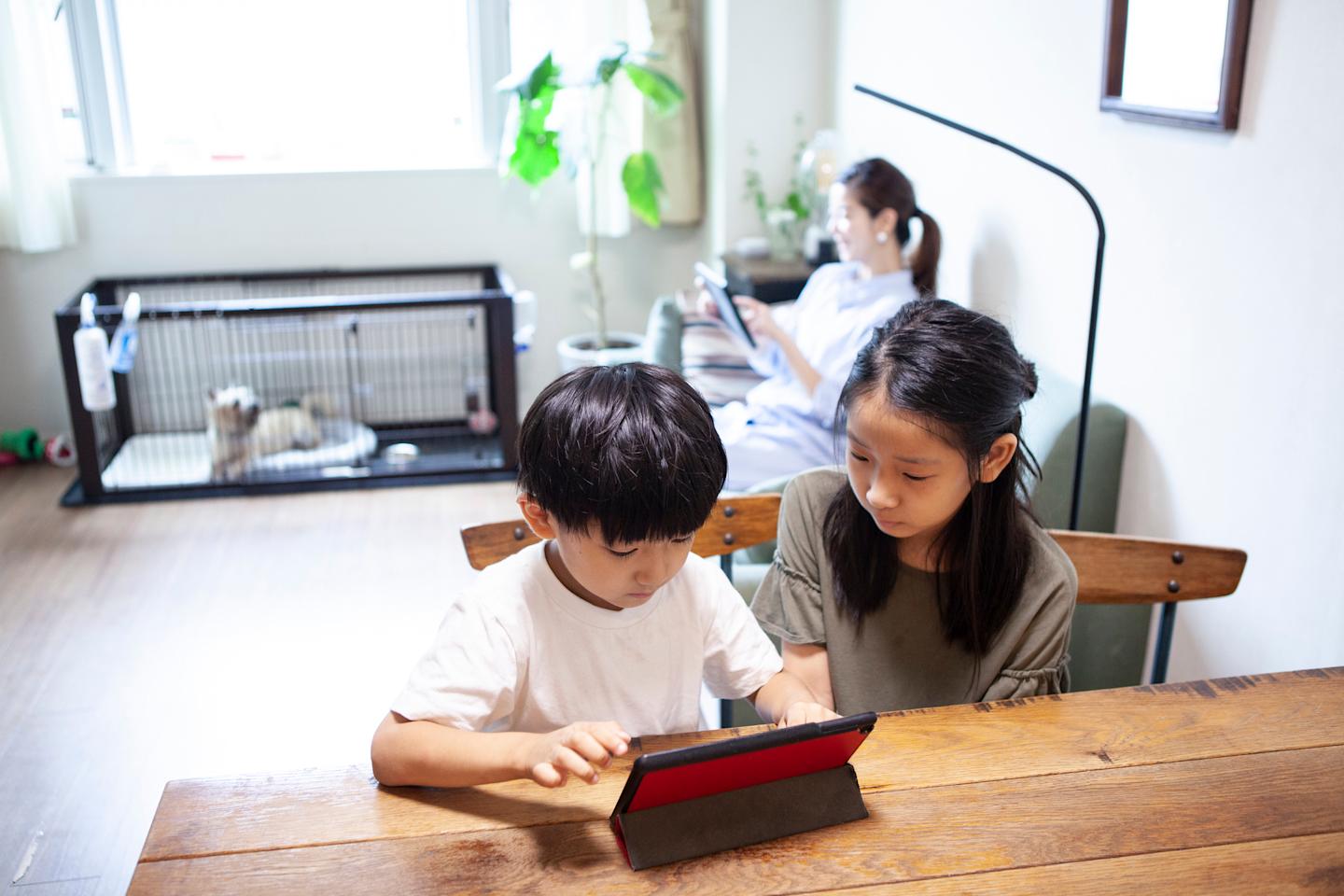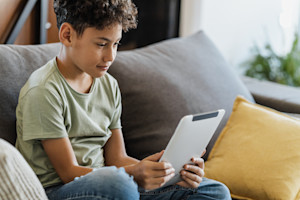Making the most of parental controls on devices and apps

Nimmi Kanji
Director - Social Purpose Programs, For Good and TELUS Wise

Discussing online privacy with your kids is an important part of creating safe online experiences for them. While it may seem that kids are in their own worlds when they are using devices and apps, parents and guardians still have an important role to play in protecting kids’ privacy, gatekeeping the content they see and ensuring their online interactions are safe.
Most device operating systems and the apps kids use offer a suite of parental controls and privacy settings. By familiarizing yourself with what’s available and taking advantage of the settings, you can let the kids in your life experience the advantages of being online while minimizing the risks.
Apple devices
Apple provides, “tools that let parents know, and feel good about, what kids are doing.” Features let parents set limits on how and how often kids can use their devices including:
- Screen time: track how much time kids spend on apps, devices and websites and set limits for specific apps and websites.
- Downtime: block apps and notifications at a specific time (i.e. bedtime or during homework hours).
- Ask to download/buy: approve or decline kids’ app download/purchase requests from your device.
- App store: direct kids to the “made for kids” section on the app store and add content restrictions (age range) so they only see age-appropriate apps.
- Combined limits: combine individual apps and websites and set limits.
- In app purchases: block the option of in app purchases. For instance, you can block the purchase of power-ups and other in-game options.
Android and Chrome devices
Google offers Family Link with tools to keep the entire family safer online including:
- Screen time limits: schedule downtime, set time limits for apps and guide children to age-appropriate content.
- Permissions management: set specific permissions for websites and extensions accessed through Chrome.
- Account management: change or reset passwords for kids’ accounts, edit personal information or delete an account if necessary.
- Location settings: locate kids on one map (if they are carrying their device) and receive notifications of arrivals/departures.
Parents can also use the controls available on popular apps that kids use all the time. It’s not just about how much time kids spend online, it’s also about the content they consume.
TikTok
TikTok offers Family Pairing, which allows a parent or guardian to link their TikTok account to a kid’s account to better control content, privacy and well-being settings. Some of the key features in Family Pairing include:
- Private account: set your child’s account to private for restricted access.
- Comments/direct messages: limit who can comment on your child’s content and send them direct messages.
- Daily screen time: set time restrictions for app usage and track how much time kids spend on the app.
- Restricted mode: enable this feature with a password to limit exposure to unsuitable content.
- Video keywords: filter keywords and hashtags and choose which feeds your kids can see.
In March 2023, TikTok released several new features to help parents ensure safer use of the app:
- 60-minute screen time limit: for kids under 13, parents need to enter a password to extend time on the app.
- Daily screen time: customize based on the day of the week and kids’ schedules.
- Screen time dashboard: at-a-glance view of app usage.
- Notifications: mute notifications to minimize disruptions.
Meta
In 2022, Meta introduced Family Center, which offers supervision tools for parents/guardians, as well as expert resources. The vision is to extend these capabilities across all Meta technologies with centralized management. Currently, parental controls are available for Instagram and include:
- Account management: kids can invite parents/guardians to manage their accounts or parents/guardians can request management access.
- Time management: see time spent on the app and set usage limits.
- Notifications: if your child reports someone, you receive a notification.
- Follow updates: get notifications when your kids follow someone or when someone follows them back.
YouTube
YouTube offers parents the option of creating a supervised account for kids under 13, so parents have more visibility into and control over age appropriate content. Many parents opt to create a YouTube Kids profile for their younger users and gain access to parental controls including:
- Block or share content
- Change content level settings
- Turn off the search feature
- Review watch history
- Disable autoplay.
Parental controls and privacy settings are two great tools parents and guardians can use to help keep kids safe online but ongoing dialogue about online safety is still critical. If you are going to use parental controls, be upfront and let your child know you will be monitoring their online activities. Introduce controls early and proactively rather than waiting until your kids are older or using them as a consequence. By doing so, you can help your kids see parental controls as tools that give them more freedom online rather than hampering their independence.
Learn more about how to keep your kids safe online with our online workshop for parents at telus.com/WiseWorkshops.
There is more to explore

Social media
Do you know what your kids are watching on YouTube?
Learn how to keep your kids safe on YouTube with built-in parental controls, supervised experiences and practical conversation tips.
Read article
Social media
When kids become content: the risks of sharenting
Learn how to share responsibly and respect your child’s privacy, right to consent and digital future.
Read article